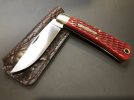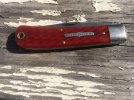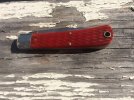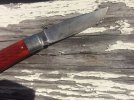That's a Big Knife in all ways!
That is a very special one there. I've been waiting to see one. Thanks for unveiling that beauty.
I really like the LVS Abalone. I would enjoy a splitback whittler with that covering. They may have made one already, but I might as well try to find a hen’s teeth. Lol
That is very special. Would love to see it in person
Here's my 1 Minute Overview
Knife Talk video coming up




